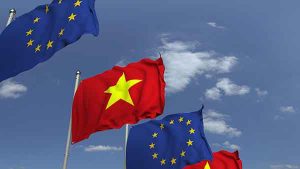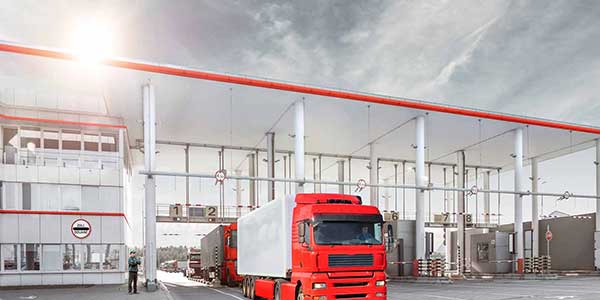EVFTA: EU-Vietnam Free Trade Agreement
The agreement will be valid on 1 August 2020 after ratification by the participating countries. The investment protection agreement agreed at the same time has also been ratified by parliaments and will enter into force on 1 August 2020 together with EVFTA.
EU-Vietnam Free Trade Agreement enters into force
 The agreement will be valid on 1 August 2020 after ratification by the participating countries. The investment protection agreement agreed at the same time has also been ratified by parliaments and will enter into force on 1 August 2020 together with EVFTA. In addition to goods and services, Vietnam thus also receives capital and technology from Europe. Although both agreements will apply from 2020, stakeholders will have to consider some transitional periods until final implementation.
The agreement will be valid on 1 August 2020 after ratification by the participating countries. The investment protection agreement agreed at the same time has also been ratified by parliaments and will enter into force on 1 August 2020 together with EVFTA. In addition to goods and services, Vietnam thus also receives capital and technology from Europe. Although both agreements will apply from 2020, stakeholders will have to consider some transitional periods until final implementation.
What are the goods covered by the agreement?
The duty-free regime covered by the free trade agreement concerns both imports and exports of goods and services. European exporters can list the various duty-free products from the transitional period list. In addition, the EU waives import duties on products such as:
- Electrical goods
- Shoes
- Textiles and clothing
- Coffee
- Rice
- Seafood
- Furniture
- Phone sets
The aim of the trade agreement is to promote global added value and increase the export and import of textile seproducts, machinery, cosmetics, pharmaceuticals, seafood and agricultural products between vietnam and Europe’s trading partners. Germany, in particular, as the largest exporter within the EU, benefits from the free trade agreement.
Let us consult now
What are the transitional periods?
The FREE trade agreement includes the abolition of 99% of all tariffs on goods deliveries between the EU and Vietnam. 71% of import duties on Vietnamese products will disappear immediately upon entry into force of the agreement. The remaining 29% of customs duties will be abolished over the next seven years.
Vietnam waives 65% of all import duties on European goods from the entry into force of the Free Trade Agreement. For example, a large proportion of instruments and measuring instruments and approximately 70% of all textiles and clothing items will be subject to duty-free from August 2020.
The following products are subject to various deadlines for the complete abolition of customs duties:
- Motor vehicles: From 2030 full duty-free.
- Car accessories: From 2027, the duties will be 0.00 euros.
- Plants, machines and electronics: Most of the products will be subject to free trade from the entry into force of the trade agreement. Otherwise, tariffreduction will be phased in until the full duty-free regime between 2025 and 2027.
- Chemicals: Approximately 70% of all chemicals are immediately duty-free. Otherwise, tariff reductions are gradually reduced. Depending on the product, free trade will begin in 2023, 2025 or 2027.
- Pharmaceuticals: Approximately 50% of all pharmaceuticals are immediately duty-free. Otherwise full free trade from 2027.
- Wine and spirits: phased reduction of tariffs with complete abolition by 2027.
- Furniture: duty-free from 2023.
- Means of transport: customs 0.00 euro from 2030.
- Stones, ceramics and porcelain: Depending on the product duty-free from 2025, 2027 or 2030.
- Animals and agricultural products: complete free trade either after the entry into force of the trade agreement or gradually from 2025, 2027, 2030 or by quota.
What are the benefits of the agreement?
So far, more products are imported into the EU from Vietnam than vice versa. However, this could change with the free trade agreement. The duty-free system for machines, medical technology as well as chemical and pharmaceutical products is of particular interest to German companies and can open up new markets and increase sales. This is also ensured by the system of giving European Union companies access to public tenders as soon as a fixed volume is exceeded. This will allow European pharmaceutical manufacturers, for example, to participate in public tenders from the Vietnamese Ministry of Health, as the medicines ordered no longer have to be manufactured exclusively domestically.
The European negotiators also highlight the agreements on common standards on labour law, environmental protection and social development linked to the trade agreement. In particular, the granting of free trade unions was negotiated for a long time and finally implemented with the agreement. The bans on child labour and forced labour, as well as the requirements on climate protection and species protection, are also intended to ensure that manufacturers comply with EU standards.
Here you will find a guideline on the agreement between the trading partners.
EVFTA: What do I have to consider when exporting?
European producers must ensure when exporting goods to Vietnamese business partners that, in accordance with the rules of origin, only the declaration of an exporter registered in the REX system is accepted. This reference is important because there is an error in the original translation of the free trade agreement on rules of origin. This refers to authorised exporters who are entitled to make a declaration as to the origin of the goods. However, this is not correct, but must be registered exporters for a value of EUR 6,000 or more. If the total value of the consignment is lower, each exporter may make the declaration in accordance with the rules of origin.
What needs to be considered when using preferential tariff treatment in imports?
In order to obtain an authorisation for the duty-free importation of Vietnamese goods, the importer must present the movement certificate EUR.1. The movement certificate is also mentioned in Annex VII to Protocol No 1 of the Agreement. However, the certificate is referred to there. For consignments of goods of less than EUR 6,000, a declaration of originwhich may be issued by any exporter is sufficient.
Until now, the Generalised System of Preferences (GSP) applied to imports. This system will be applied for a period of two years in parallel with the Free Trade Agreement. Under the trade agreement, the EU’s preferential tariff must not be higher than the tariffs calculated in accordance with GSP. This scheme will apply until 2027.
With reference to the customs declaration of 28 August 2020 regarding movement certificates EUR.1 issued in Vietnam with an overprinted guilloche pattern in blue instead of green, the European Commission granted the Vietnamese authorities a transitional period on 4 September 2020 for the use of these non-conforming movement certificates EUR.1.
The transitional period shall apply to movement certificates EUR.1 with a blue printed guilloche pattern background with a serial number from AA000001 to AA100000 until the availability of conforming movement certificates EUR.1 of the AB series by 31 December 2020. Exceptionally, these can be recognised in the EU as valid proof of preferential status, unless there are other reasons for not doing so.
Non-conforming movement certificates EUR.1 issued after 31 December 2020 shall be rejected for technical reasons.
Your contact to dbh
You have a question?
You have a question? Then write to us via our contact form.
Your contact to our sales department
Your contact to the dbh sales department
+49 421 30902-700 or sales@dbh.de
Do you use one of our products and need support? Our support team will be happy to advise you.



